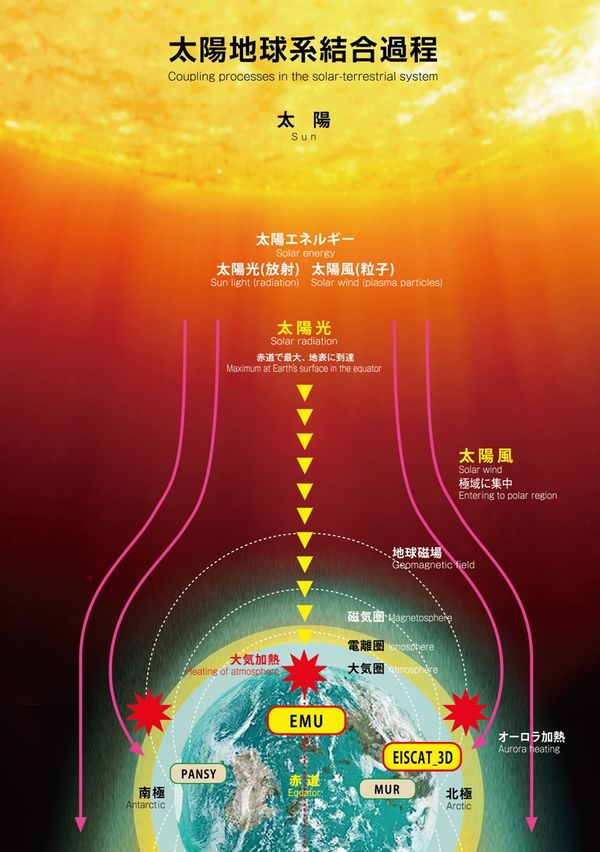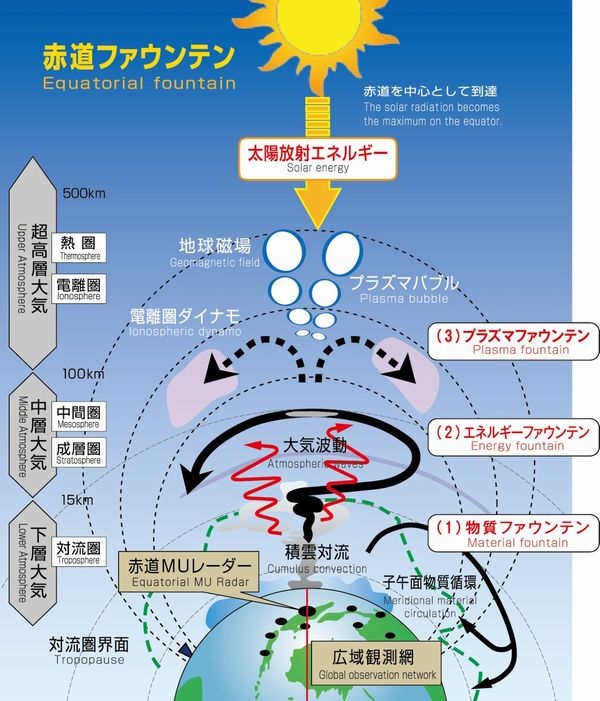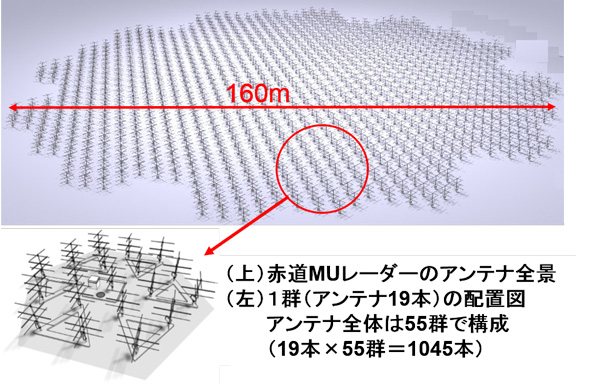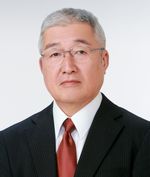Study of coupling processes in the solar-terrestrial system
Project Gist
Study energy and material flow of the Earth with large atmospheric radars!
Keywords
Solar-terrestrial coupling, Large atmospheric radar, Master plan, Roadmap, Highest-priority large project
Background, Purpose, and Project Achievements
Energy from the Sun reaches the Earth as a radiation (sunlight) and the plasma-particle flow (solar wind), which are maximum at equatorial and polar regions, respectively. This project aims to study global flow of the energy and materials by installing two large radars at equatorial and northern polar regions as well as global network of observations to connect them. Research Institute for Sustainable Humanosphere (RISH) names the atmospheric coupling starting from the equator as “equatorial fountain”, and will study it with installing the Equatorial MU Radar (EMU) in Indonesia.
Future Prospects
This study was approved as a project of “Masterplan 2014” by the Science Council of Japan, and of “Roadmap 2014” by the Ministry of Education, Culture, Sports, Science and Technology (MEXT). Kyoto University is proposing budget for the Equatorial MU radar to MEXT. We continue every effort to realize this research project.
Figures



Principal Investigator

・TSUDA Toshitaka
・Research Institute for Sustainable Humanosphere (RISH)
・After graduate from Kyoto University Graduate School of Engineering in 1977, in the service of Kyoto University, and has been active in the development of atmospheric environment measurement technology by using radio waves and lights as well as in the research and education of the atmosphere dynamical processes. He has been conducting field observations of the equatorial atmosphere since 1980s, and traveled to Indonesia in total 123 times. Currently, a professor and the Director of Research Institute of Sustainable Humanosphere (RISH), Kyoto University,
and the President of Japan Geoscience Union (JpGU).
